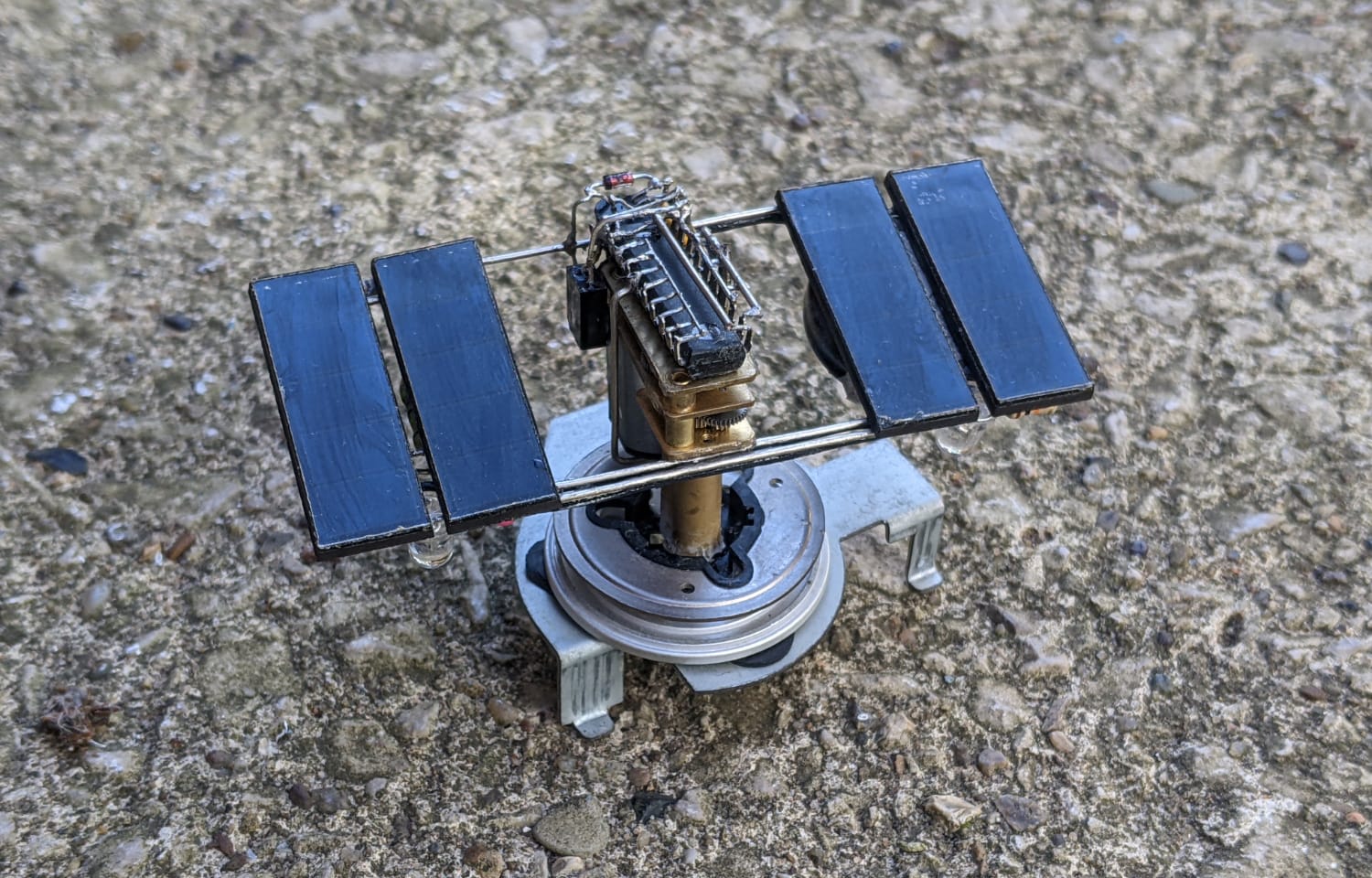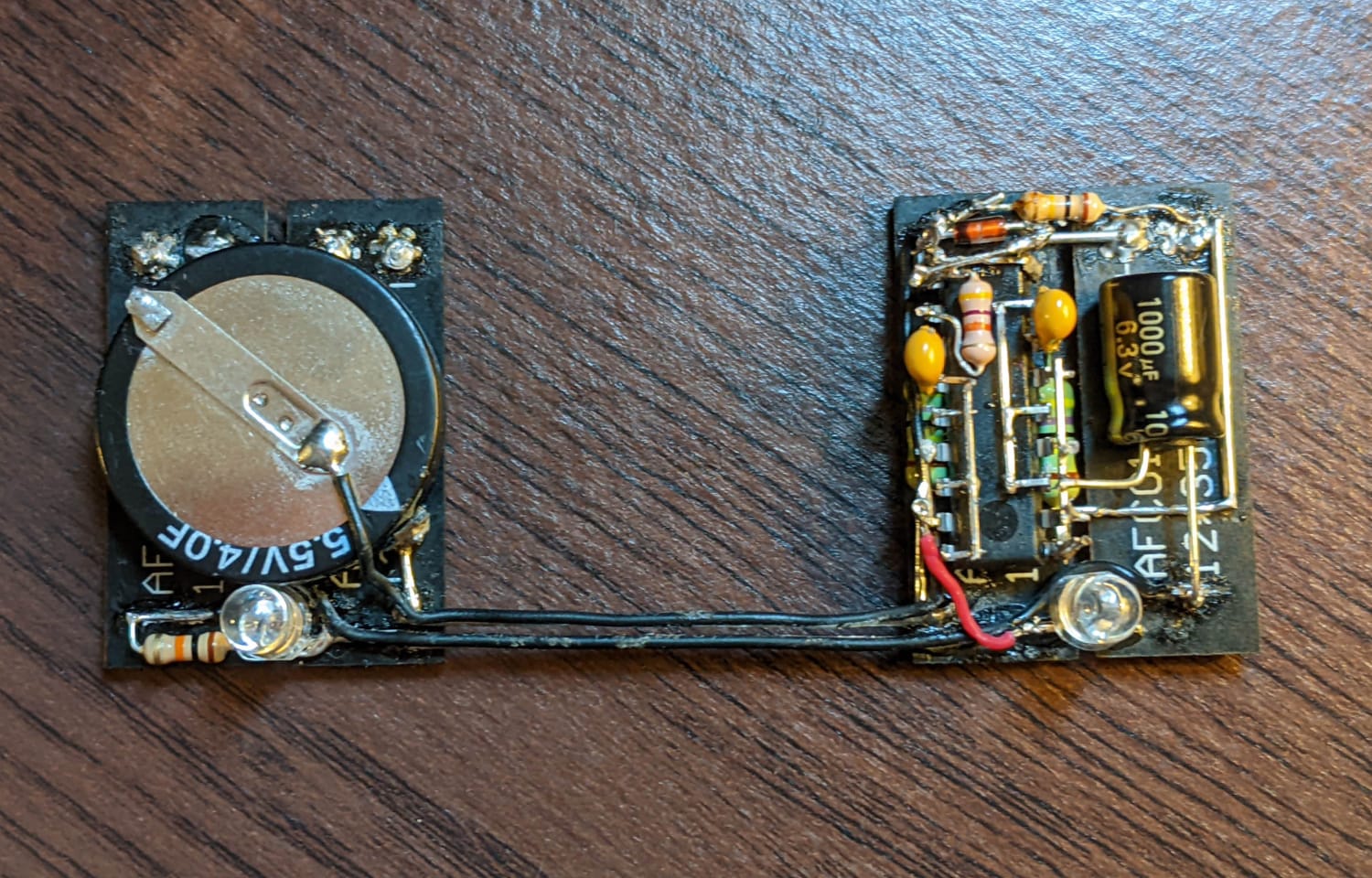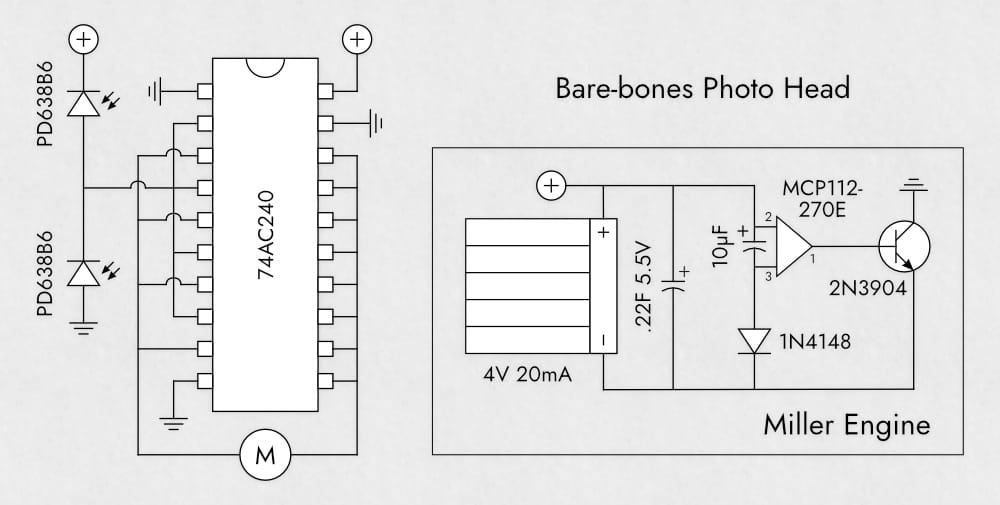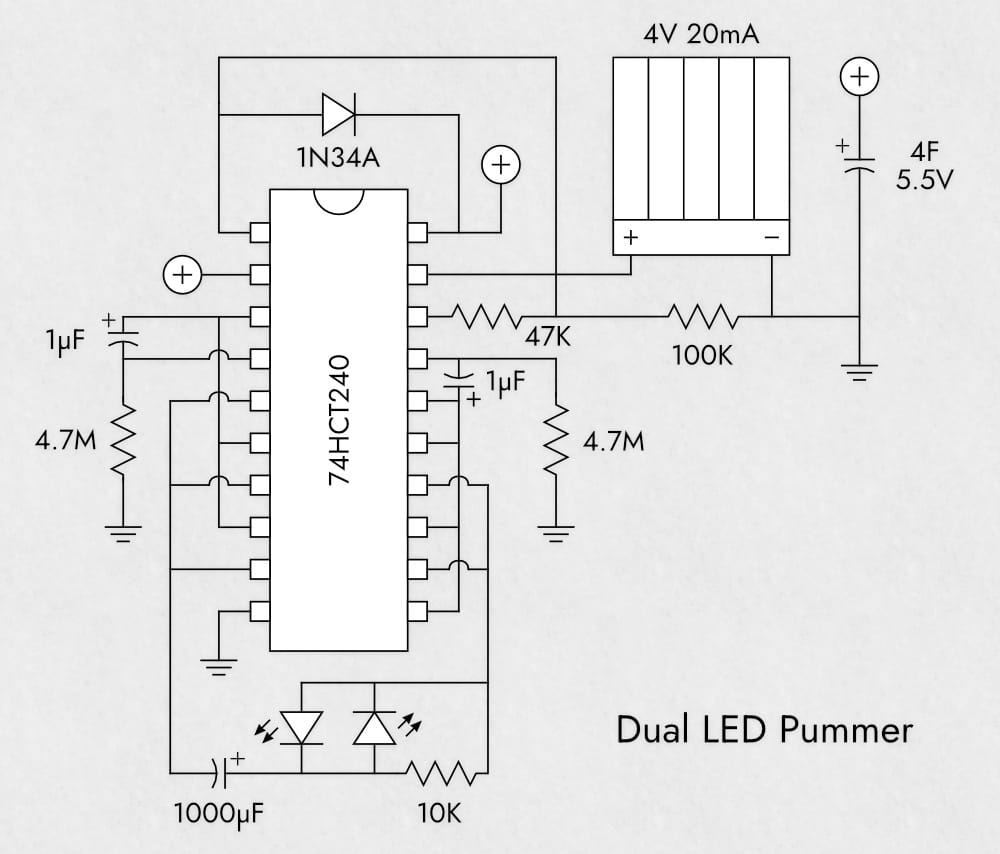For my next bot, I wanted to make something that would be active both in the light and the dark. A headbot seemed perfect: a stationary robot that could sit on my desk and turn to face the brightest source of light, soaking up energy during the day and then releasing it after dark through a pummer circuit that flashes a couple of LEDs. I was inspired by this impressive BEAM bot over on the Bold City BEAM Robotics site.
There were many circuits I could have used for the light-seeking head, but by far the most simple and reliable is the bare-bones photo head. This uses a 74AC240 chip configured as a bicore - essentially a tiny oscillator that passes a signal back and forth: rotate the head left, rotate the head right. That back-and-forth rhythm changes based on how much light each photodiode receives, causing the robot to turn and face the brightest light source. With a Miller solar engine, this circuit can be solar-powered.
The whole robot is mounted on a 30RPM gear motor attached to the base via a screw terminal block glued in place, which happens to fit onto the motor shaft nicely. The base itself is made out of various pieces of techno-scrap. I don't quite remember where the bottom three-legged part came from, but the two discs on top were salvaged from a dead hard drive.

Each pair of solar panels is wired in series, with one pair (the robot's left) dedicated to the head circuit, and the other charging a beefy 4F supercap for the pummer. This is why, 11 seconds into the video, it takes longer for the robot to turn to the right once I've rotated it - the panels powering the head circuit are further away from the light.
In full sunlight, however, this bot is very active, firing away every few seconds once the supercap has spent a couple of minutes charging. One drawback to the bare-bones head circuit is that, unlike more complex designs, it doesn't shut down once it locks onto the brightest light source - it's always wiggling back and forth! Once it gets dark, the two LEDs blink away for around 4½ hours after a full day's charge.

I tried to keep everything as neat as possible with this bot. Hiding the pummer circuit behind the solar panels was a bit of a squeeze, they're connected together and mounted onto the motor via straightened-out paperclips which form part of the circuit as well as the structure, carrying wires glued underneath them too.
Overall I was happy with the design and impressed with the performance of the bare-bones circuit. Eventually I will try one of Wilf Rigter's PowerSmart heads for a more efficient design.

